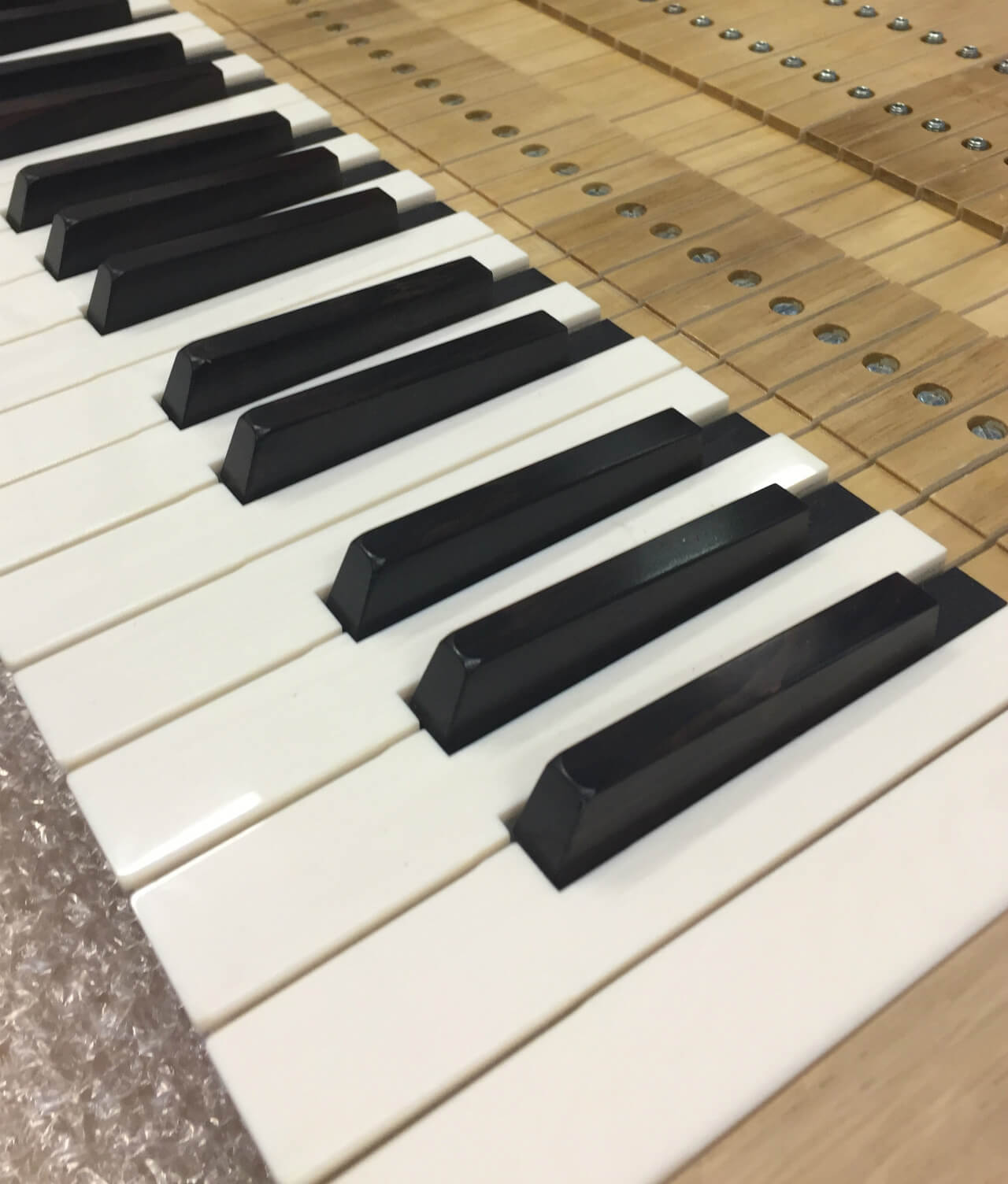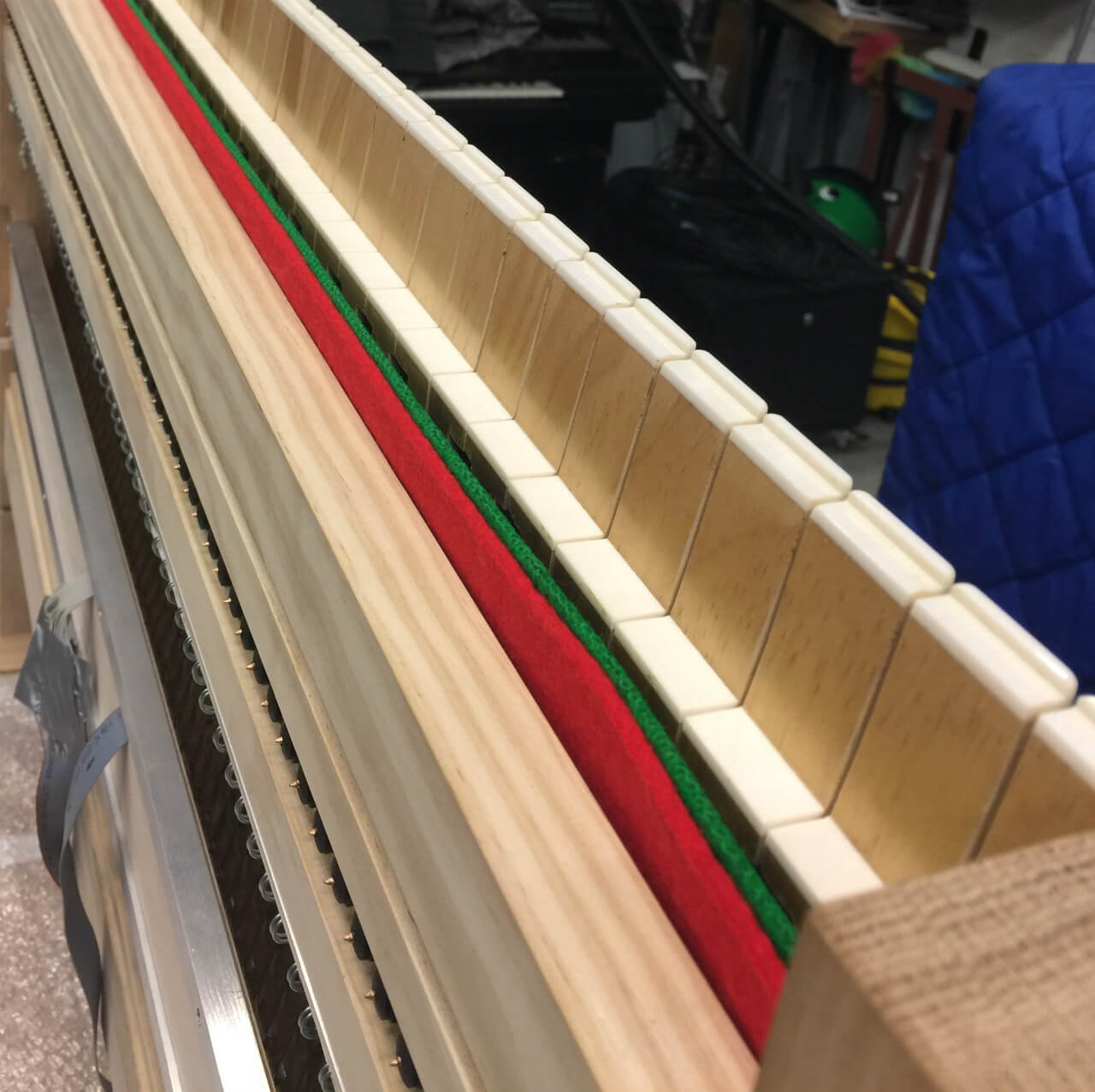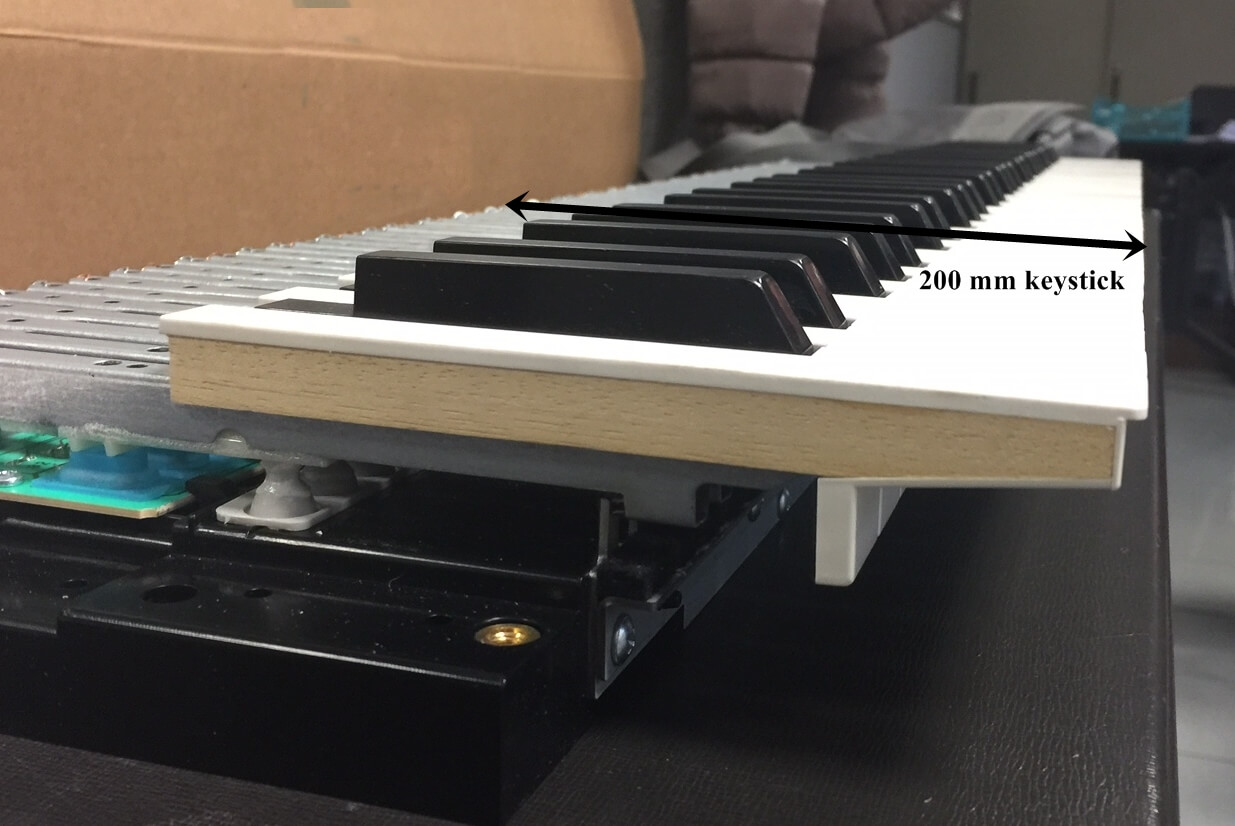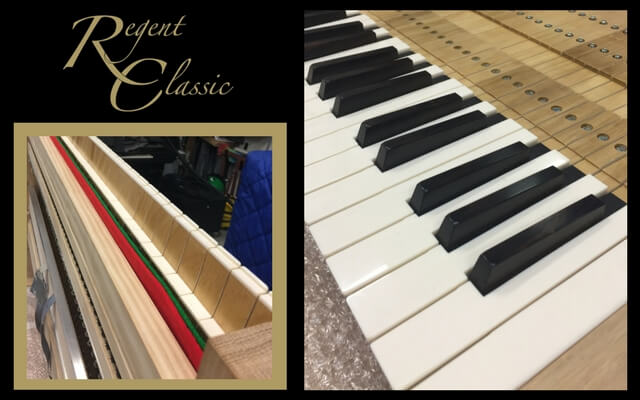Keyboard options for organs are often overlooked
When investing a substantial sum in a new organ be it pipes or digital it is surprising to me how seldom the customer pays much attention to the keyboards. It is perhaps taken for granted that they will be good and perhaps as they will be new it is assumed the touch will be acceptable.
As we know all too well old organs of all types can have very erratic touch just due to worn out parts so the expectation of ‘new’ is enough for most musicians to be content that any issues the current instrument presents will be eradicated.
This is of course true but there is so much more to keyboard choice if you wish to explore the options. We all immediately understand what is bad but perhaps need guidance on what is good!
A few things come to mind which I share with you below.

Choosing the best Keyboard option for your digital organ
Above all else you want consistency of touch. This after all is what the old instrument you are replacing has most likely lost. So you want the same weight to depress all the keys and you want the same depth of travel to sound the note. All new keyboards should give you that and if they do not there is something very much awry.
When it comes to weight this is very much a personal preference but how few customers choose to express it. Some older musicians need a light weight as arthritis in wrist joints is most effected by a heavy action. This is achieved in 2 ways in digital organs. Either opposing magnets can be adjusted to increase or decrease the pressure needed to depress the key or a system of springs whose tension can be set achieves the same effect.
Whatever method is employed change of weight can dramatically improve one’s enjoyment of playing and getting this right should be high on your list of issues to address.

‘Pluck point’ is unique to mechanical tracker action pipe organs. It is a feature that adds to the experience of contact with the instrument. This is a point in the key travel at which the weight needed to keep the key moving down greatly reduces. It is caused in a pipe organ by the opening of the pallet that allows air to flow to the pipe. With the pallet open the air pressure above the pallet increases and almost matches the air pressure that was pushing up keeping the pallet closed and so there is an abrupt reduction in the effort needed at the keyboard to open the pallet.
Good musicians can use this intimate control to increase the articulation of the start of the note adding to the excitement of the sound. This by the way is a feature we replicate in the software of our organs so speed of keyboard stroke also alters the starting sound of pipes that are most prone to this effect.

The pluck point effect is also mimicked in keyboards by magnets or rubber bubbles that collapse after partial depression and so from that point downward the weight needed to keep going reduces.
Inertia is also a significant part of the feel. Inertia is a mechanical resistance that appears as the key-stick accelerates in the downward stroke. A heavy key will feel quite different to depress from a light key even if the both need the same weight to start the movement as the heavier key will resist the acceleration to a greater degree.
While a subtle effect solid keys with inertia seem much easier to control as any jerkiness in your action is absorbed and smoothed by the key. Solid wood filled keys are the best for this and of all types I play these are by far and away the most rewarding.

Finally pivot point is a contributor to key feel. Most digital organs use keys no longer than 200 mm to 250 mm. Pipe organs on the other hand have a keystick nearer to 450mm long. More than double its shorter cousin.
This means the pivot point is twice the distance from the key front and the angle of the fully depressed key is about half that of the shorter option. The longer stick has twice the mass so it offers the greatest contribution to the inertia effect described above.

P&S Keyboard an option for Regent Classic digital organs
It is for the above reasons that we have now introduced P&S keyboards as an option. P&S are renowned manufacturers of specialist organ components and pipes. They supply keyboards around the world to most major pipe organ builders and as you will see from the pictures build to an extraordinarily high quality standard.
So once you have decided on all the options of touch and weight that you might like to build into the instrument you commission all that remains is the choice of keyboard finish and that opens a whole new box of delights!
Find out more about the Regent Classic Keyboard options and suppliers.
More About P&S Organ Supply Company (UK) Ltd.
Manufacturers and suppliers of church pipe organs and organ parts to the trade. Specialising in keyboards, pedalboards, soundboards, benches, consoles, chassis and a range of other parts. Find out more on the P&S website.
I have had a passion for church organs since the tender age of 12. I own and run Regent Classic Organs with a close attention to the detail that musicians appreciate; and a clear understanding of the benefits of digital technology and keeping to the traditional and emotional elements of organ playing.



My No. 1 offence- I play by ear! No organ is safe from me if I can open the lid and find the power switch ( or the webbing straps are not broken on the pedals) there is such an organ in The Church of the Good Shepherd, N Z, in the Turf Roofed farm in Iceland etc. We have a Hammond and rare is the day I fail to attack that! My church, Shotley, has an (original ) Barrel Org.converted to very stiff finger board op.wonder: Can the keys ever be renewed? I LOVE organs and seeing your ads. really
give me a lift, I mentally played those keys just now…Soooo much I need to learn, I’ll read your advice notes again..Gooodnight and many thanks Sir.